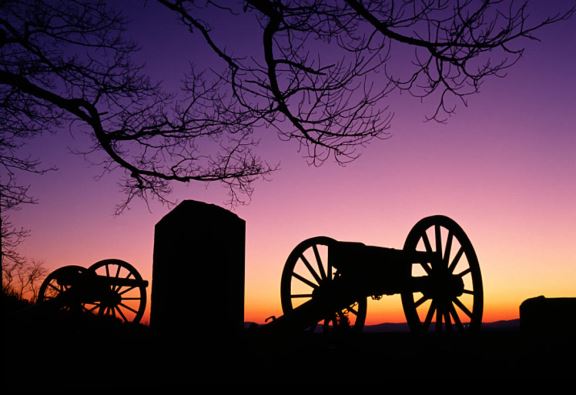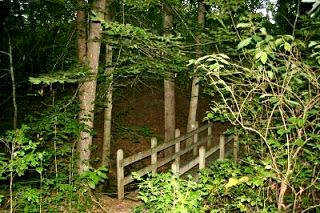Poison Spring
by Gary Wright

“. . . revenge turns to bitterness and bitterness is the worst poison . . . .”
– Sarah Holman
Near the town of Chidester, Arkansas, on April 18, 1864, a signal event played out in history that held the outcome of the American Civil War in doubt in the Western Theater for at least a few months. Located in northwest Ouachita County, the population of Chidester is some 325. Then, as now, the economy was based on logging, farming, and other agrarian activities. Though populated by a hardy, hard-working people, it is safe to say that most events in and around Poison Spring would hardly resonate on the world stage. Rebel forces inflicted a significant defeat on the Union and dashed their plans for the western theater. Sadly, though, the Confederates forever tinged their victory with murder and war atrocities.
In the 1864 engagement at Poison Spring, Confederate troops ambushed and destroyed a Union supply wagon train which was bound for Texas to support the Union invasion there. During September of the previous year, after capturing Little Rock and Fort Smith, Federal forces held the two significant accesses to the Arkansas River and, therefore, effectively controlled that great waterway. Confederate troops and their government were then driven out of Little Rock. They concentrated in the southwestern part of the state.
In the spring of 1864, Union forces embarked on a two-pronged attack to gain control of northwest Louisiana and east Texas. Union Major General Frederick Steele moved his troops south from Little Rock on March 23, 1864, for what became known as the Camden Expedition, one prong of that attack with the other prong coming out of Louisiana. After two skirmishes at Elkin’s Ferry and Prairie D’Ane, Steele marched his forces on Camden, Arkansas on the Ouachita River, arriving there on April 15. Steele was relatively safe within Camden’s fortifications but short of supplies.
In an ill-fated attempt to resupply his force, on April 17, Steele sent a force of some 600 men and with nearly 200 wagons to seize 5,000 bushels of corn that were reportedly stored west of Camden. Making its way to White Oak Creek some eighteen miles from Camden, these troops, which included the First Kansas Colored Infantry Regiment, went foraging into the surrounding countryside to gather corn at area farms and plantations. Confederate cavalry had managed to destroy much of the corn; however, the Yankee troops gathered the remainder, as well as other plunder, and regrouped at White Oak Creek. This force was joined the next morning by a 500-man relief force of infantry, cavalry, and two additional artillery pieces.
Confederate General Marmaduke, meanwhile, placed nearly 3,600 Rebel cavalry and twelve cannons between the wagon train force and the main Union force at Camden, blocking the Camden-Washington Road near Poison Spring. Gen. Marmaduke commanded cavalry from Arkansas, Missouri, and Texas, as well as Colonel Tandy Walker’s Choctaw Brigade from the Indian Territory.
General Williams, commanding the Union wagon train force, met the Confederate troops, blocking the road, on the morning of April 18, and established an L-shaped defense around his wagon train. The First Kansas Colored Infantry, recruited from former slaves from Arkansas and Missouri, fought off two attacks. A third, well-coordinated attack by four Confederate brigades broke the First Kansas line, and the entire Federal line broke, sending its forces into full retreat. Rebel cavalry followed them for two miles slashing and hacking with sabers into retreating and hapless Union soldiers.
The Southern troops then, in a blind rage and racial hatred, turned their attention to the wounded and captured soldiers of the First Kansas. Both Union and Confederate survivors agreed that many of the black troops were murdered after the battle was over and as most of the black soldiers were trying to surrender. Union forces lost 301 men killed, wounded and missing at Poison Spring. Of those, 117 of the dead and sixty-five of the injured were from the First Kansas Colored Infantry, a 43% casualty rate. Confederate losses are not known precisely but believed to be around 145.
This atrocity gave rise to the battle cry at many subsequent battles among Union troops, especially black Union soldiers, to “Remember Poison Spring!”

With dwindling supplies, General Steele had no choice but to retreat from the field back to the security of Little Rock, which, by then, had become a veritable stronghold with Confederate support rising throughout the region. In fact, Rebel support had strengthened so much there were many calls for a Confederate attack on Little Rock, causing General Steele to wait within the redoubt of Little Rock bracing for an attack. Without General Steele’s support, the entire Union invasion of Texas was called off, and Union forces withdrew back into Union-controlled Louisiana. Arkansas and Texas remained virtually controlled by the Confederates until the general collapse of the Confederacy in 1865 caused all of their troops to surrender one by one. The Arkansas-Texas branch of the Confederacy was never decisively defeated on the battlefield. Instead, it withered and died simply because its time was over after Lee’s surrender at Appomattox.
A small portion of the Poison Spring battlefield is now preserved as Poison Spring State Park between Bragg City and Chidester in Ouachita County. According to folklore, the confederates had poisoned the spring before the battle, hoping to deny water to the Yankee soldiers and to kill as many as possible. However, Poison Spring already had its name long before the civil war engagement. Today, the water is safe to drink and always has been. According to local legend, one of the first settlers in the area gave that name to the place in a fit of humor because he drank too much of the cool, tasty water on a hot summer day, and it gave him a tummy ache.
Bridge Image: Arkansas in the Civil War: Battle of Poison Spring
Re-enactment of the battle of Poison Spring, kkyr.com


